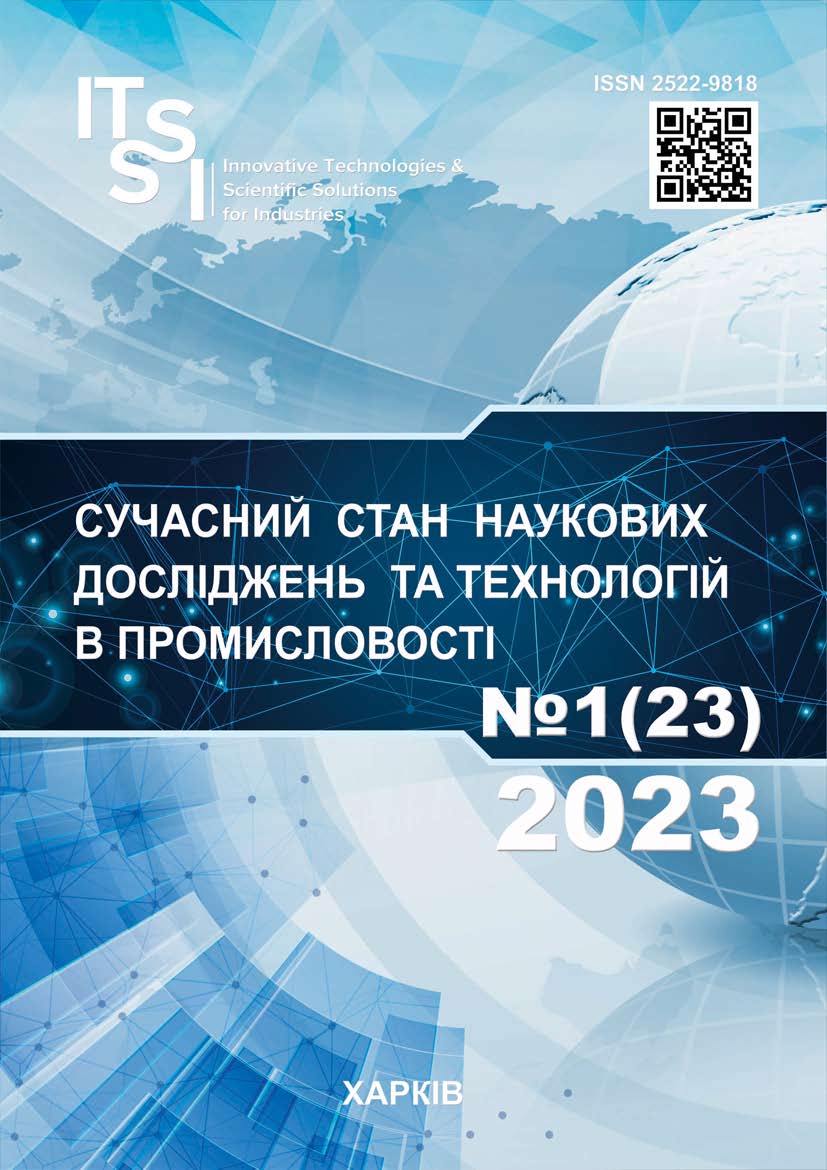AUTOMATED RESOURCE MANAGEMENT SYSTEM FOR THE UTILITY SECTOR BASED ON WIRELESS SENSOR NETWORKS
DOI:
https://doi.org/10.30837/ITSSI.2023.23.184Keywords:
energy supply; wireless sensor network; automation; gateway; monitoring; sensor node; base stationAbstract
The subject of this study is methods, tools and automated resource management systems for the housing and communal sector. The object of research is the process of controlling resource consumption at housing and communal facilities. The aim of the study is to develop an automated resource management system for the utility sector based on wireless sensor networks. To achieve this goal, the following tasks were solved: a review and analysis of existing methods, tools and automated resource management systems; selection of system components based on technical requirements and taking into account the selected LoRaWAN wireless connection technology; development of a structural diagram and algorithm for the operation of an automated resource management system based on wireless sensor networks; modelling of the process of managing the resources of the utility sector using a wireless sensor network based on t The following methods are used in the work: critical analysis of LoRa technology and other wireless IoT technologies, FOREL and -means clustering methods. The following results were obtained: a general description of the automated resource management system was carried out, its composition and main tasks were determined, and technical requirements for it were established, wireless data transmission technology was selected, on the basis of which the automated resource management system was built, an in-depth comparative analysis of the most effective modern wireless technologies – LoRaWAN and NB-IoT – was carried out, system components were selected, a structural diagram and algorithm for the automated resource management system were developed, and the process of the automated resource management system was modelled. Conclusions: the application of the proposed automated resource management system provides high-quality control of energy consumption at the facilities of the housing and communal sector, makes it possible to control their volume, monitor and analyse energy consumption data, and manage the entire energy supply network as a single system, which is especially necessary in martial law. This approachallows rationalising the consumption of resources by household consumers, which means that the financial costs of energy supply will decrease and the level of energy savings in the country will increase.
References
References
Sliusar, A., (2021). Methods and means of controlling water consumption at industrial enterprises. У: 25th International Youth Forum "Radio Electronics and Youth in the 21st Century", 22 kvitnja 2021, Kharkiv. Kharkiv: NURE. Р. 101–102. https://openarchive.nure.ua/handle/document/18189
Sliusar A. Resource Management System for of the Utility Sector at The Base Wireless Sensor Networks. Manufacturing & Mechatronic Systems 2022: Proceedings of VIst International Conference. 2022. P. 78–80.
Alam M. S., Arefifar S. A. Energy Management in Power Distribution Systems: Review, Classification, Limitations and Challenges. IEEE Access. 2019. Vol. 7. P. 92979–93001. DOI: https://doi.org/10.1109/access.2019.2927303
Chin J., Lin S., C.A Behavioral Model of Managerial Perspectives Regarding Technology Acceptance in Building Energy Management Systems. Sustainability. 2016. Vol. 8, no. 7. 641 р. DOI: https://doi.org/10.3390/su8070641
Amaral J., Reis C., Brandao R. F. M. Energy Management Systems. 2013 48th International Universities’ Power Engineering Conference (UPEC), Dublin, 2–5 September 2013. DOI: https://doi.org/10.1109/upec.2013.6715015
Panchenko, І., (2018). Ways to increase the data transmission rate in wireless sensor networks using LORA. Collection of scientific papers of the Military Institute of Telecommunications and Informatisation. (3).
Andreadou N., Guardiola M., Fulli G. Telecommunication Technologies for Smart Grid Projects with Focus on Smart Metering Applications. Energies. 2016. Vol. 9, no. 5. 375 р. DOI: https://doi.org/10.3390/en9050375
Smartico company – Klymovych Oleksandr [online], (no date). Klymovych Oleksandr. [Viewed 21 March 2023]. URL: https://klimovichalex.com/portfolio/smartico-company/
Energy management [online], (no date). YASNO. [Viewed 15 March 2023]. URL: https://yasno.com.ua/business/energymanagement
Ohliad tekhnolohii LoRaWAN [online], (no date). Atiko. [Viewed 21 March 2023]. URL: https://www.atiko.com.ua/articles-ua/obzor-tekhnologii-lorawan-ua/#:~:text=Що%20таке%20LoRaWAN&text=Протокол%20LoRaWAN%20–%20це%20програмний%20рівень,бездротовою%20мережею%20на%20великій%20відстані.
Recommendation ITU-T Y.2060, (2012). Overview of Internet of Things. URL: https://www.itu.int/rec/T-REC-Y.2060-201206-I
Lavric, A., (2019). LoRa (Long-Range) High-Density Sensors for Internet of Things. Journal of Sensors. 2019. P. 1–9. [Viewed 21 March 2023]. DOI: https://doi.org/10.1155/2019/3502987
Yang X., Pan Y. Emerging Wireless LANs, Wireless PANs, and Wireless MANs: IEEE 802. 11, IEEE 802. 15, 802. 16 Wireless Standard Family. Wiley & Sons, Incorporated, John, 2009. 648 p.
Dameri R.P., Rosenthal-Sabroux C. Smart City: How to Create Public and Economic Value with High Technology
in Urban Space. Springer, 2016. 238 p.
Kim, J.-O., (1978). Factor analysis: Statistical methods and practical issues. Beverly Hills, Calif: Sage Publications, 88 p.
Downloads
Published
How to Cite
Issue
Section
License

This work is licensed under a Creative Commons Attribution-NonCommercial-ShareAlike 4.0 International License.
Our journal abides by the Creative Commons copyright rights and permissions for open access journals.
Authors who publish with this journal agree to the following terms:
Authors hold the copyright without restrictions and grant the journal right of first publication with the work simultaneously licensed under a Creative Commons Attribution-NonCommercial-ShareAlike 4.0 International License (CC BY-NC-SA 4.0) that allows others to share the work with an acknowledgment of the work's authorship and initial publication in this journal.
Authors are able to enter into separate, additional contractual arrangements for the non-commercial and non-exclusive distribution of the journal's published version of the work (e.g., post it to an institutional repository or publish it in a book), with an acknowledgment of its initial publication in this journal.
Authors are permitted and encouraged to post their published work online (e.g., in institutional repositories or on their website) as it can lead to productive exchanges, as well as earlier and greater citation of published work.














